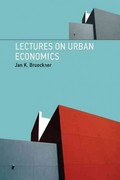Question
1 - If the marginal productivity of labor decreases, then A - the quantity of labor demanded will not be affected. B - the quantity
1 - If the marginal productivity of labor decreases, then
A - the quantity of labor demanded will not be affected.
B - the quantity of labor demanded at every possible wage rate will be less.
C - the quantity of labor demanded at every possible wage rate will be higher.
D - the demand curve for labor will shift upward and to the right.
2 - In a perfectly competitive labor market, the wage rate paid by the individual firm is
A - dependent on the demand for the product.
B - below the equilibrium market wage rate.
C - a function of the tax system.
D - the equilibrium market wage rate.
3- When U.S. computer companies hire workers in India to staff their customer service call centers, they are engaging in
A - labor engagement.
B - unfair trade practices.
C - outsourcing.
D - predatory pricing.
4 - Economic analysis indicates the net long-run effect of outsourcing for the United States is likely to be
A - an increase in the supply of labor.
B - an increased demand for labor due to economic growth.
C - a decreased in the demand for labor in the United States in the short run.
D - a decrease in the supply of labor.
1 - If the marginal revenue product of an input exceeds the marginal factor cost of the input, the firm
A - should hire less of the input.
B - should increase its use of the input.
C - is not on its marginal cost curve.
D - is maximizing profit.
5 -In a perfectly competitive situation, the profit-maximizing hiring situation for all inputs being used is where
A - the MRP of each input is equal to the price of each input.
B - the MRP of each input is greater than the price of each input.
C - the MRP of each input is less than the price of each input.
D - There is no relationship between MRP and the prices of the inputs.
6 - A labor union is likely to seek all of the following EXCEPT
A - increased competitiveness in the labor market.
B - economic improvements for their members.
C - safer working conditions.
D - increased job security for its members.
7 - Suppose a union successfully negotiates a wage rate for its members that is above the competitive wage rate, then
A - the union must find a way to ration jobs among the excessive number of workers who wish to work at the negotiated wage.
B - employment in the union sector will increase.
C - the union must find a way to make union workers more productive.
D - the union must also negotiate a fringe-benefit package that the membership will like.
8 - Which of the following is NOT a wage or employment strategy that a union would follow?
A - Set a maximum wage rate such that a shortage of workers will result.
B - Set a wage rate that will maximize the income of its members.
C - Set a wage rate such that all workers that want to find a job can find a job.
D - Set a wage rate that will maximize the income of only some of its members.
9 - A union contract requiring elevator operators in a building with automatic elevators is an example of
A - a lockout.
B - a closed shop.
C - a right-to-work requirement.
D - featherbedding.
10 - Evidence in support of the hypothesis that unions increase the productivity of union workers is
A - that unionized firms face lower turnover rates than nonunion firms do.
B - there is an excess supply of labor at the union wage rate.
C - the fact that union wages are greater than nonunion wages.
D - that most contracts are settled without a strike.
Step by Step Solution
There are 3 Steps involved in it
Step: 1

Get Instant Access to Expert-Tailored Solutions
See step-by-step solutions with expert insights and AI powered tools for academic success
Step: 2

Step: 3

Ace Your Homework with AI
Get the answers you need in no time with our AI-driven, step-by-step assistance
Get Started


